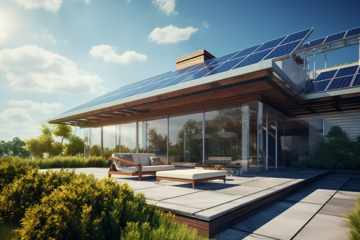While solar energy has become significantly more affordable, with installation costs dropping over 99% since 1980, a new analysis reveals that the “soft technology” features are lagging behind. These features include codified permitting practices, supply chain management, and system design processes, contributing only 10 to 15% to the total cost declines. The majority of the savings came from improvements in hardware.
However, as soft technology increasingly dominates the total costs of solar energy systems, this trend could slow future savings and hinder the global shift to clean energy, warns Jessika Trancik, the study’s senior author from MIT’s Institute for Data, Systems, and Society (IDSS).
The Research Team
Trancik’s co-authors include lead author Magdalena M. Klemun, Goksin Kavlak, and James McNerney, all of whom have connections to IDSS.
Analyzing Solar Energy Costs
The team developed a quantitative model to analyze the cost evolution of solar energy systems, considering both hardware and soft technology features. The framework revealed that soft technology hasn’t progressed much over time, contributing even less to overall cost declines than previously thought.
To reverse this trend, engineers could make solar energy systems less dependent on soft technology or directly improve inefficient deployment processes. Trancik emphasizes the importance of understanding efficiencies and inefficiencies to support the clean energy transition.
The Hard Truth About Soft Costs
Researchers found that the “soft costs” of building a solar power plant, such as design and installation, now typically range from 35 to 64% of total costs. Trancik and her team wanted to understand why these costs weren’t decreasing as quickly as hardware costs.
They developed a quantitative approach that models the change in solar energy costs by assigning contributions to individual technology features, both hardware and soft technology.
Key Findings
The researchers found that hardware improvements had the most significant impact on reducing soft costs. For example, photovoltaic module efficiency doubled between 1980 and 2017, reducing overall system costs by 17%. About 40% of that decline could be attributed to reductions in soft costs tied to improved module efficiency.
The framework also revealed that hardware technology features tend to improve many cost components, while soft technology features affect only a few.
Static Soft Technology
The study also looked at several countries, finding that soft costs can vary widely. Countries with better soft technology performance 20 years ago still perform better today, while those with worse performance haven’t improved much.
The researchers suggest two strategies for reducing soft costs: focusing on hardware improvements that make soft costs more dependent on hardware technology or directly targeting soft technology features, such as creating more efficient workflows or automated permitting platforms.
Future Applications
Trancik and her collaborators plan to apply their quantitative model to study the soft costs related to other technologies, such as electric vehicle charging and nuclear fission. They are also interested in understanding the limits of soft technology improvement and how to design better soft technology from the outset.
The research is funded by the U.S. Department of Energy Solar Energy Technologies Office.
